This article is part of a guide to London from FT Globetrotter
The smell of stale cigarettes and the three-pint working lunch may be long gone, but drinking has never fallen out of fashion in the City of London, the financial district of one of the world’s most exhilarating cities.
There are still dozens of pubs in the so-called Square Mile that are worth stepping into for their historic roots, evocative interiors or buzzing atmosphere.
Some of the pubs on this list go back centuries, and it is not hard to imagine Shakespeare or Dickens supping a tankard of ale in one of the older establishments. The Jamaica Wine House, for example, was originally a coffee house, almost 400 years ago, whose customers included the diarist Samuel Pepys.
The authors with a beer in The Culpeper’s rooftop garden (see below)
We both started writing for the Financial Times more than 20 years ago, including stints as financial reporters, meaning plenty of drinks with contacts or friends in the Square Mile. And after more than two years of sporadic working from home during the pandemic, it has been fun to revisit old drinking holes, and to discover new ones.
The beauty of this kind of list is that there is no right answer, and we fully expect — encourage — you to tell us where we should have been supping. The “City” is a fairly loose concept, stretching from the edge of Westminster to Spitalfields and east London. Did we get a balance between old architecture, atmosphere and a good selection of beers? Was it a mistake to include the environs of the Square Mile and drift into Chancery Lane and Fleet Street?
That is what the comments section below is for, so fill your boots.
The Viaduct Tavern
126 Newgate Street, London EC1A 7AA
-
Good for: Victorian atmosphere
-
Not so good for: Large groups
-
FYI: Closes 8pm on Saturday, shut on Sunday
-
Website; Directions
This ornate former gin palace across the road from the Old Bailey is steeped in history and ghost stories, some of which you might choose to take with a pinch of salt.

A detail of The Viaduct Tavern’s ornate copper-red ceiling

The pub was a gin palace in the Victorian era
Opened in 1869, this is a small pub with just one room around a horseshoe-shaped bar. There are old mirrors and Victorian paintings on the walls, and the ceiling is copper red.
Ask the barman nicely and he might unlock the door and lead you down to the cellar, where — after walking past the beer barrels — there are old cells, which supposedly date back to Newgate Prison.
Another theory is that the cells used to belong to the Giltspur Street Compter, a debtors’ prison that was demolished 170 years ago. The steps are very steep, and it would be a long way to fall: so probably best to do this early in the evening before you’ve sampled too many of the 90 gins on offer.
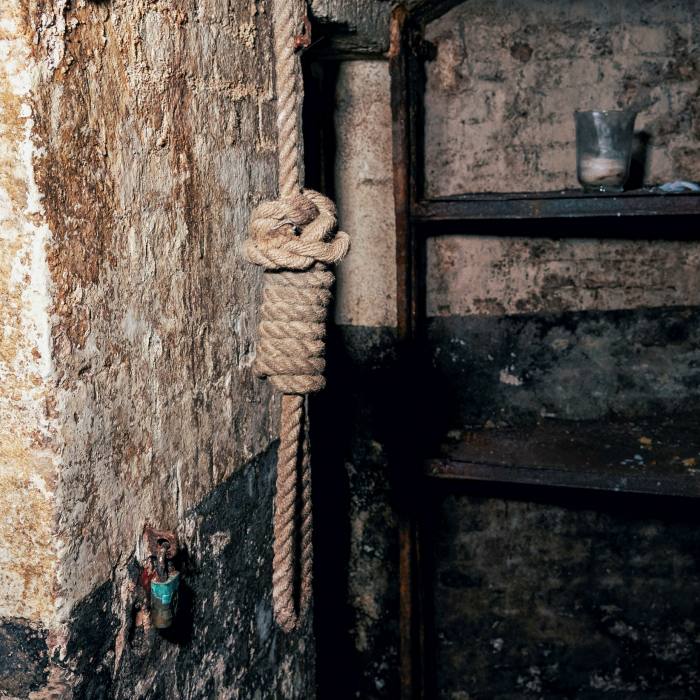
Cells beneath The Viaduct Tavern are said to date back to Newgate Prison, which was across the road from the pub

The pub retains many of its Victorian features
Back in the bar, the ceiling has a bullet hole from where a drunk serviceman fired a gun on Armistice Day in 1918. It then ricocheted into one of the paintings, where the damage can still be seen.
The Viaduct, now a Fuller’s pub, has a good array of beers: Amstel, Peroni, London Pride, ESB, Asahi, Guinness and more when we dropped by.
Behind the bar is an old ticket booth where the landlord would sell tickets for “drink redemption” — to prevent being ripped off by his own unreliable staff.
Pelt Trader
Dowgate Hill, London EC4N 6AP
-
Good for: The range of beers
-
Not so good for: Delicate eardrums
-
FYI: the pizzas are well regarded
-
Website; Directions
If you are all about the beer, then the Pelt Trader — located in a converted railway arch under Cannon Street station — is your stop.
This independent pub sells an eclectic range of lagers, ales and ciders that are not widely available in the City. We opt for the Furtrapper Helles lager, Redemption Trinity light ale and Adnams Wild Wave cider from a bar menu that also includes a black lager from Germany’s Köstritzer and a strong Pilton Labyrinth still cider from Somerset.
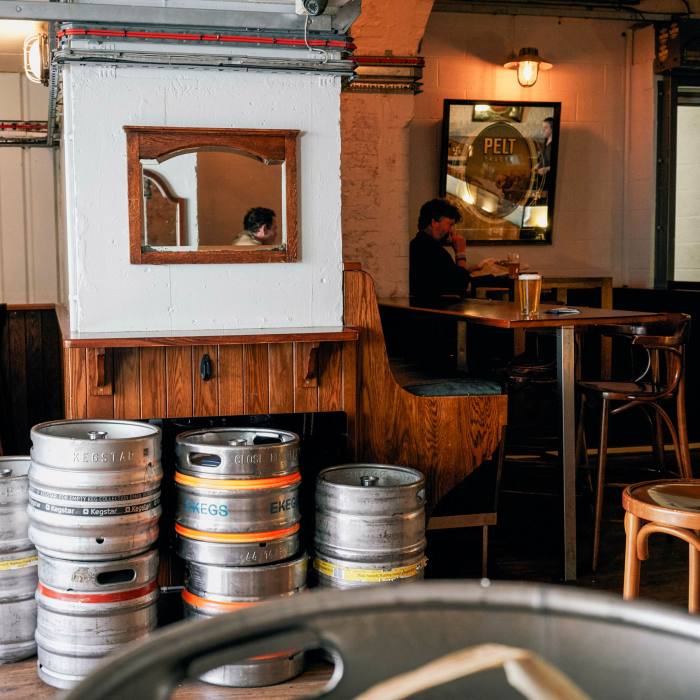
The Pelt Trader is located in a railway arch beneath Cannon Street station

A canoe hangs from the ceiling in tribute to the fur traders after which the pub is named
Situated across the street from the Skinners’ Hall, home to one of the City’s Great Twelve livery companies, the pub is cavernous and minimalist, with a single canoe hanging from the ceiling in tribute to the fur traders from which it takes its name. The acoustics are far from ideal, so you might have to shout to be heard when it gets packed, or take your drink outside to the small pavement area.
If you plan on settling in for the night, fans rave about the pizzas, priced at £1 per inch, meaning a large salami, prosciutto, pepperoni and mushroom will set you back £18. Overall, the Pelt Trader is an excellent choice if you love beer and like to give your cash to someone other than the chain pubs that dominate central London.
Ye Olde Watling
29 Watling Street, London EC4M 9BR
-
Good for: An alfresco pint near St Paul’s
-
Not so good for: Winter, without a warm coat
-
FYI: The bar scrum is not as bad as it looks, and just don’t mention the toilets
-
Website; Directions
Ye Olde Watling is a great spot for an after-work pint, a fact not lost on the Financial Times journalists who frequent it.
The pub, located on the corner of the mostly pedestrianised Watling Street and Bow Lane, not far from St Paul’s Cathedral, was built by Sir Christopher Wren in 1668 after the original burned down in the Great Fire. The interior, dominated by the long bar, feels historic, although many prefer to take their drinks outside to the street, which throngs even in winter.

Ye Olde Watling was rebuilt by Sir Christopher Wren after the Great Fire of London

Ye Olde Watling’s outside space is popular with punters
A fine selection of lagers and ales is on offer, including St Austell Brewery Proper Job and Magic Rock blonde bitter Hat-Trick. The scrum at the bar can be off-putting, but there are usually plenty of staff to ensure a swift turnover. Bar food is also served, but that is probably not why you came. We took our drinks to the newly opened terrace at the rear in the shadow of the Gothic church of St Mary Aldermary, another of Wren’s fabulous creations.
A mention of the toilets, which are smelly, cramped and invariably soaked in something you would rather not step in. Nicholson’s, the pub’s owner, please take note: punters expect better after paying the best part of £6 a pint. But that’s London pubs for you, and this is still an excellent choice if you are showing a visitor what a real one looks like.
The Jamaica Wine House
St Michael’s Alley, Cornhill, London EC3V 9DS

The Jamaica Wine House is tucked away down an alley
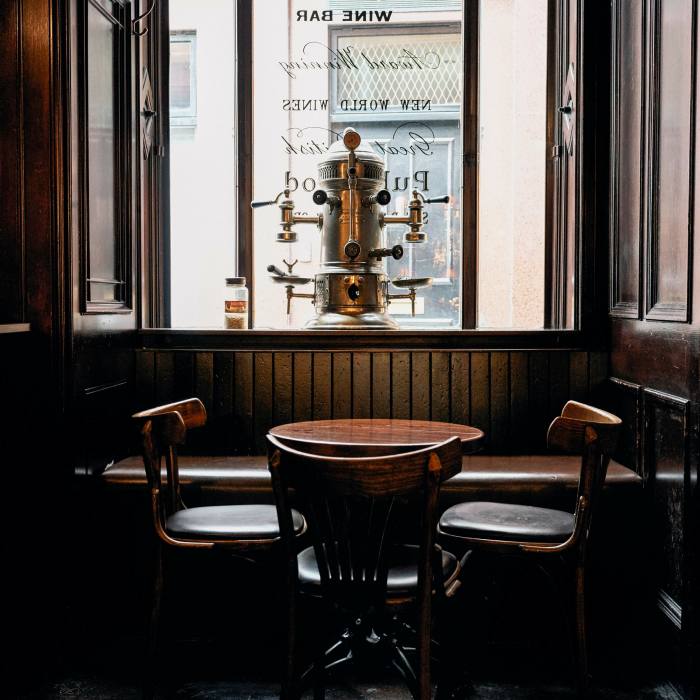
The pub is on the site of London’s first coffee shop
-
Good for: Stepping back in time
-
Not so good for: Anyone without Google Maps — it can be hard to find
-
FYI: This was the site of London’s first coffee shop
-
Website; Directions
You could easily miss The Jamaica Wine House if you did not know about it. Tucked away off Cornhill, not far from the Bank of England, it was the site of London’s first coffee house almost four centuries ago, and claims celebrated diarist Samuel Pepys as a one-time customer. The sign outside reads: “Here stood the first London coffee house at the sign of the Pasqua Rosee’s Head 1652”.
The current incarnation, a vibrant sandstone building, is a popular spot for City workers. We go for a Whitstable Bay cask ale and Spitfire lager and prop ourselves up against one of the wood-panelled walls that help to break up the pub’s interior. Drinks can also be taken outside to the pleasing courtyard.

The Jamaica Wine House’s snug basement space

The entrance to Todd’s Wine Bar, downstairs in the pub
The cosy basement area is billed as Todd’s Wine Bar, which offers a range of wines and cocktails (but no food).
If you are visiting and want to move on to another spot for a pint, a short walk takes you to the historic Leadenhall Market, where The Lamb Tavern is among the options.
Ye Olde Cheshire Cheese
145 Fleet Street, London EC4A 2BP
-
Good for: Fleet Street aficionados
-
Not so good for: People with mobility issues
-
FYI: If you’re meeting people here, bear in mind it has quite a confusing layout with multiple rooms and bars
-
Website; Directions
It is hard to imagine a cosier spot than the front room of Ye Olde Cheshire Cheese on a winter evening, with a log fire smouldering in the hearth. Old portrait paintings adorn the wood-panelled walls and it would be easy to imagine that you’ve stepped back through the centuries.

Samuel Johnson is among the many literary luminaries to have frequented Ye Olde Cheshire Cheese . . .
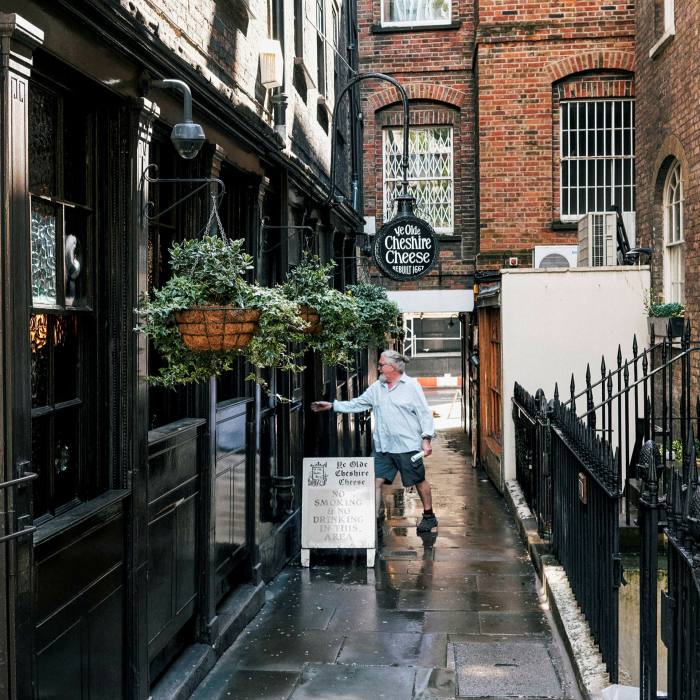
. . . which is one of the capital’s oldest pubs
Built on the site of a former monastery, this is one of the oldest pubs in London, dating back to 1667 — when an even older alehouse was rebuilt.
As a Fleet Street venue, it was also a favoured haunt of journalists in the heyday of the newspaper industry, who nearly all worked a short stumble away. Today’s clientele include City workers and lawyers from the nearby legal temples, as well as students from King’s College up the road.
You enter the pub via a narrow alleyway past an ancient-looking sign listing monarchs of centuries gone by. Once inside you enter a higgledy-piggledy maze of rooms on several levels with the heavy scent of woodsmoke, ale and history.

Ye Olde Cheshire Cheese was built on the site of a monastery

The pub’s beer is by Yorkshire brewery Samuel Smith
Famous attendees of Ye Old Cheshire Cheese have included PG Wodehouse and Charles Dickens, who obliquely mentions it in A Tale of Two Cities. In one Agatha Christie story, Hercule Poirot lunches on steak and kidney pudding at the pub.
Nowadays the pub is owned by the Samuel Smith brewery (based in Tadcaster, North Yorkshire), which provides its beer, including Organic pale ale, Taddy porter, Double Four lager and Old Brewery bitter.
Cittie of Yorke
22 High Holborn, London WC1V 6BN
-
Good for: Cod-medieval atmosphere
-
Not so good for: Range of different branded beers
-
FYI: It would be easy to think this is an ancient premises. It really isn’t
-
Website; Directions
Stepping into the long bar of Cittie of Yorke you half expect a Plantagenet in full body armour to emerge from the gloom bearing a cup of mead.
This pub is only about 100 years old but the vibe is definitely medieval, with dark vaults high above the dimly lit drinkers.
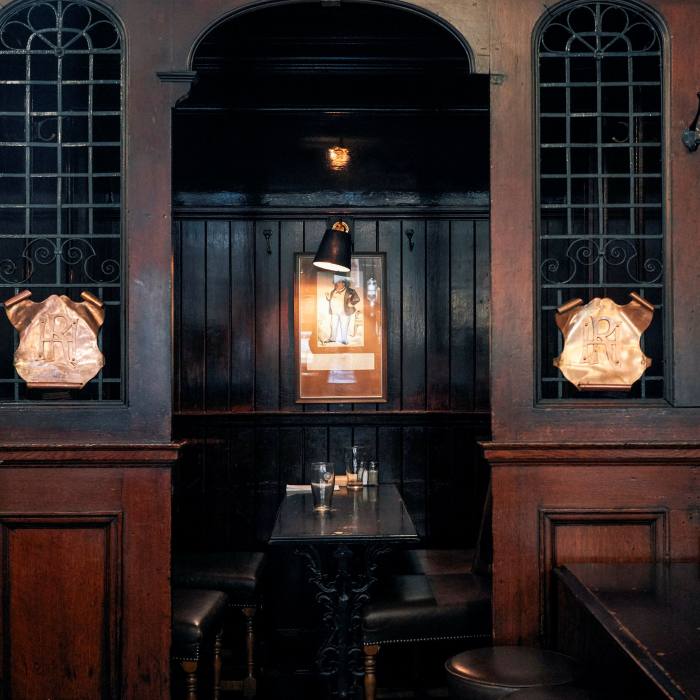
‘Ideal for some light intrigue’: one of the booths in the Cittie of Yorke

The Cittie of Yorke may be about a century old but ‘the vibe is definitely medieval’
There are huge vats and barrels above the bar, which serves a somewhat limited array of drinks mostly from the Samuel Smith brewery, including extra stout, Old Brewery bitter and Alpine lager. You would probably come here for the atmosphere rather than the beers.
The main bar is lined with discreet wooden booths — ideal for some light intrigue — and there is a scent of smoke hanging over the mostly suited crowd.
On the walls there are cartoons and sketches of judges and court scenes, reflecting its proximity to the Royal Courts of Justice.
The Old Dr Butler’s Head
2 Masons Avenue, London EC2V 5BT
-
Good for: Swift pint after work
-
Not so good for: Formal occasions
-
FYI: It’s easy to miss this pub, which is well hidden down an alley
-
Website; Directions
Down a side street off Moorgate, this pub is in a quirky building surrounded by modern offices. It has a cosy, historic vibe that is only slightly tarnished by the two television screens playing in the main bar.
This Shepherd Neame pub had a good selection of beers when we dropped by, including Whitstable Bay, Bishops Finger, Spitfire, May Bee honey ale and Bear Island pale ale.

Dr William Butler. Thankfully, his celebrated ‘purging ale’ is no longer served at the City pub that bears his name
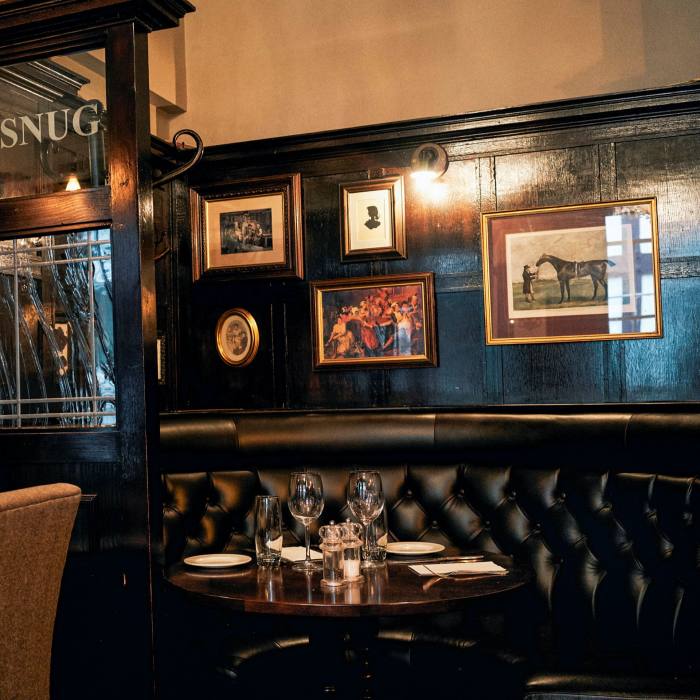
The snug in The Old Dr Butler’s Head
This little boozer was destroyed in the Great Fire of London in 1666 but was rebuilt in the early 19th century.
It was named after Dr William Butler, a court physician to King James I whose specialities included shooting pistols to shock patients out of epilepsy.
Butler created a so-called “medicinal purging ale”, which alas is no longer available either on tap or in bottles. This may not be a bad thing, given that the beverage was steeped in scurvy grass and the herb agrimony and used as a laxative.
The steps downstairs to the loos are lined with countless Victorian-style framed paintings, adding to the sense of history.
The lunch menu includes ham and eggs, sausage and mash, cod and chips and an array of sandwiches.
The Counting House
50 Cornhill, London EC3V 3PD
-
Good for: A taste of the City at its most brash
-
Not so good for: A peaceful, undisturbed pint
-
FYI: Pies are a speciality if you want to eat here
-
Website; Directions
There is nothing subtle about The Counting House. It’s a big, brassy, loud City pub and not ashamed to admit it.
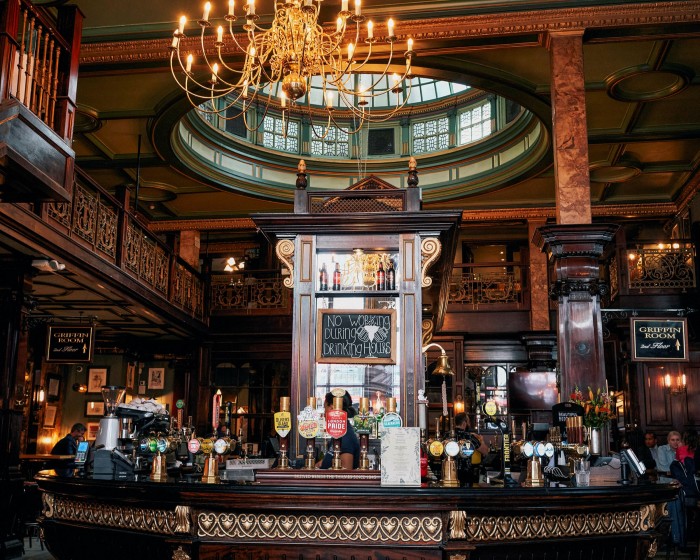 The Counting House is unabashedly ‘big, brassy and loud’ © Marco Kesseler
The Counting House is unabashedly ‘big, brassy and loud’ © Marco Kesseler
Underneath an enormous dome and chandelier the main bar is flooded with the sound of groups of City types talking loudly over each other.
Upstairs there is a balcony with views over the bar, which serves an impressive variety of brews, including Oliver’s Island, Frontier, Neck Oil, Camden IPA, Seafarers, Hophead, London Pride and Sierra Nevada.
This is an extrovert pub, with glossy railings, vast mirrors and, on the wall above the staircase, a large mural of what appears to be 19th-century bankers counting money.
The Counting House was built in 1893 as Prescott’s Bank, and its foundations sit on the wall of a 2,000-year old Roman basilica. It’s a five- minute walk from the Bank of England.

The pub’s pie tasting board is served with three beers

The Counting House was built in 1893 as Prescott’s Bank
It opened as a pub in 1998 and is run by Fuller’s as one of its “Ale & Pie Houses”. Pies at the time of looking included fish, ham hock, steak and ale and a “tasting board” — served with beer — including three different pies for £20.
The rooms at The Counting House, in keeping with its financial history, have been given names after old coins such as “Crown”, “Guinea”, “Florin” and “Sovereign”.
East India Arms
67 Fenchurch Street, London EC3M 4BR
-
Good for: A catch up-drink with an old friend
-
Not so good for: Big groups
-
FYI: Preferable to a Wetherspoon for a pre-train pint
-
Website; Directions
The compact East India Arms occupies the street level of a delightful Georgian townhouse in an otherwise forgettable part of the City close to Fenchurch Street station.
The pub’s authentic wooden floors and furnishings make for a pleasing ambience, while the photographs that line its walls evoke an era of steam trains, crowded London docks and British imperialism linked to the merchant company from which it draws its name.

The East India Arms dates back to 1829

The pub is the perfect spot for a quick pre-train pint
The pub is named after the East India Company, which from 1600 was the vehicle for British commercial and colonial expansion into Asia for more than two centuries. The company’s more nefarious activities are being reassessed but it did play a significant role in the growth of the City and building the Port of London.
Beers include Whitstable Bay pale ale and Spitfire lager from the owner, Kent’s Shepherd Neame brewery A selection of wines and spirits is also on offer.
Given its diminutive size, this is probably not the place to arrange a large get-together. When we popped in on a recent lunchtime, the few tables were occupied by small groups of suited City workers enjoying a pint and an out-of-office catch-up. It does fill up in the evening, when customers can spill out on to the small street-side area.
The Culpeper, Commercial Street
40 Commercial Street, London E1 6LP
-
Good for: Rooftop views of the City
-
Not so good for: Traditionalists
-
FYI: This is definitely not the City but we think the pub and surrounding area are worth the short journey
-
Website; Directions
The Culpeper, a four-storey bar and restaurant on busy Commercial Street, is only a five-minute walk from Aldgate but already the City feel has been replaced by a more fashionable east London vibe.
You enter via the industrial-style ground-floor bar, a bright and open space that throngs with drinkers even on a weeknight. Yet it is still an excellent spot to meet a group of friends if you are able to bag a table early enough.
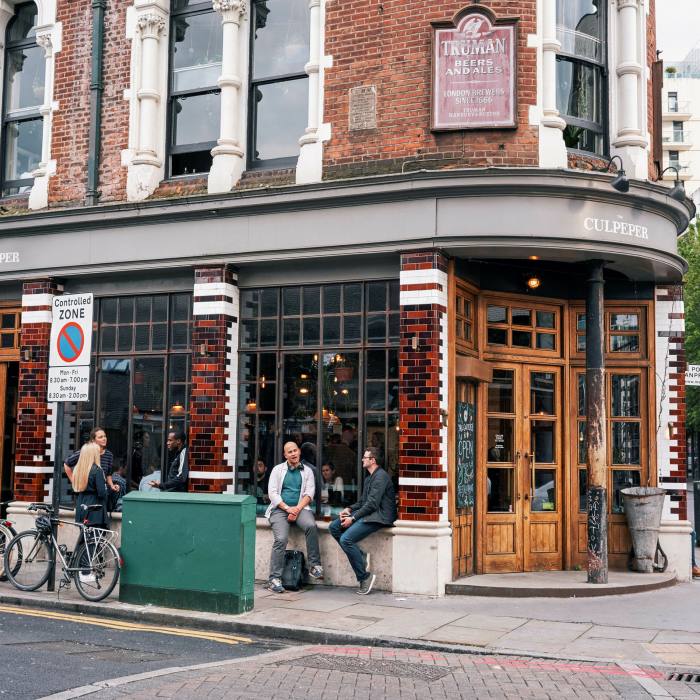
The Culpeper is a short walk from the City

The ground-floor bar is busy most evenings
The admirable range of beers makes a refreshing change from the dreadfully familiar selection in so many other City pubs, and includes Purity Helles lager from Purity Brewing in Warwickshire, Mon Chéri IPA from Three Sods in London Fields and Hiver lager from south of the river.
But the highlight is the rooftop garden bar, which offers stunning views back over the City towards the Gherkin and the growing collection of towers that now crowd Bishopsgate. And while far from a secret, it was also relatively quiet on the evening we visited with photographer Marco in tow.
If you want to make a night of it, there is also a highly regarded restaurant and small boutique hotel in the same building, both sadly out of reach of FT expenses.
Instead we headed north, past the exquisite Shoreditch Church, towards Spitalfields Market, where The Ten Bells and The Pride of Spitalfields are excellent alternatives.
What’s your favourite watering hole in the City of London? Tell us in the comments
Follow FT Globetrotter on Instagram at @FTGlobetrotter
Cities with the FT
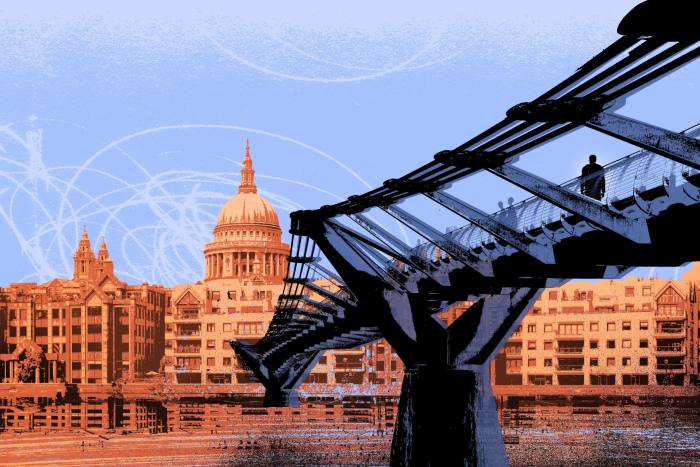
FT Globetrotter, our insider guides to some of the world’s greatest cities, offers expert advice on eating and drinking, exercise, art and culture — and much more
Find us in London, Tokyo, New York, Paris, Rome, Frankfurt, Singapore, Hong Kong and Miami
https://www.ft.com/content/71b8218b-80a4-4265-9f39-2c48075be05b




